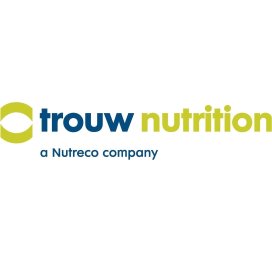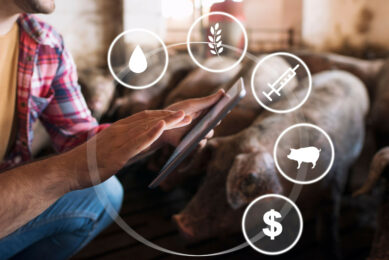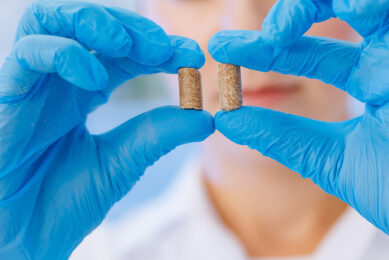Top 5 digital shifts in animal feed for 2023

With 2022 almost coming to an end, we highlight 5 digital trends in animal nutrition that will have more significance in the coming year… and beyond. These digital developments are set to further fine-tune diets, optimise formulations, and reduce carbon impact of feed production.
 We have a better overview of relevant feed management data
We have a better overview of relevant feed management data
Over the last years, a true digitalisation is taking place in animal nutrition that creates more opportunities for precision feeding strategies. We have more farm and feed data available (e.g., from automatic feeders or sensors) and better (more user-friendly) online tools and software available to combine the data to extract valuable, new information and insights. In 2023 and beyond, it is expected that management of data will become more important, due to the increased complexity of the feed ingredient market and the pressure on feed prices. We will see an increased uptake of feed management tools (dashboards) such as MyNutriOpt, developed by Trouw Nutrition, to have a better overview of the quality of the incoming raw materials and an increased demand of feed millers to have more functionalities such as: making data reports, see trends over time, and export of the values to LCF software. This digitalisation of feed data allows for better decision-making, from procurement to quality control, feed formulation and operational management. This is because you know the most accurate nutritional values and feed quality, the backbone of producing high quality feed.
 There will be an increased need to analyse (new) feed ingredients
There will be an increased need to analyse (new) feed ingredients
Keeping the quality consistent in all feed batches is key for feed producers. But due to market and logistic disruptions and price spikes of common feed ingredients, we need to be more flexible in using other (alternative) raw materials to produce complete feed. Some of these products may have variable nutritional values, marked by often a lower energy and a higher fibre content compared to more conventional (commonly used) feed ingredients. At the same time, the risk of mycotoxin contamination of raw materials increases, due to changing weather patterns among others. The use of NIR helps to get the most accurate nutritional values and formulate diets that are closer to reality and better meet the nutritional needs of the animals. More advanced mycotoxin analytical equipment helps to test for multiple mycotoxins at the same time. In 2023 and beyond, it is expected that feed analysis and sampling of incoming batches will become even more important, which may lead to more frequent sampling or different sampling protocols. We also see a rise in the implementation of mobile testing of feed ingredients, grass, silage or complete feed on the farm.
 Prediction models will be used more to support efficacy of diets
Prediction models will be used more to support efficacy of diets
Feed formulation is all about precision and making sure the diet formulated on paper does the trick in practice. While the use of animal models is not a new thing, we do see that these models become smarter and more advanced in terms of the amount of data they analyse and results they can produce by combing different datasets. The models we see today, such as Watson (developed by Trouw Nutrition) are based on a wide range of variables of the farm, animal, market and feed and allows us to simulate and cocreate a reality from the current moment to a set time in the future. For animal nutritionists, these models help to better predict outcomes on animal growth or feed costs when they change a protein source, adapt nutrient density levels or add a feed additive for example. In 2023 and beyond, it is expected that the use of predictive animal modelling will be used more in livestock farming for e.g., better financial planning, a smarter market strategy for pigs, a reduction of feed costs and to support precision feeding strategies.
 We will add more, new (derived) nutrients in feed formulation
We will add more, new (derived) nutrients in feed formulation
Feed formulation is constantly on the move, and we are moving away from using gross nutrient values (such as crude fibre, crude protein, and crude energy) to using the derived versions of these nutrients, such as total dietary fibre and digestible amino acid values. In 2023 and beyond, it is expected that the number of (derived) nutrients that animal nutritionists can use in feed formulation continues to grow, spurred by increased knowledge and R&D and new (alternative) ingredients that become available on the market. The science of kinetics (the speed of digestion and behaviour) of fibres and protein is one of the latest insights in this field and has recently led to new nutrients called rapid, slow and resistant fibres and protein. Trouw Nutrition applies this knowledge to optimise poultry diets and its feeding programmes for pigs and will continue to study how kinetics can improve animal performance and health. Other newly derived nutrients that we will hear more of are: net energy for poultry (instead of digestible or metabolisable energy), digestible calcium, ileal digestible lysine, and standardised total tract digestible phosphorous levels. The increased use of new (derived) nutrients leads to greater precision formulation, better predictability of animal performance and health, increased flexibility in raw material utilisation, and more sustainable diets.
 We have more (and more accurate) LCA tools available for feed
We have more (and more accurate) LCA tools available for feed
Animal feed makes a major contribution to the total emissions of animal-based food production, as feed production involves land use, transportation, processing and more. This is why the animal nutrition industry can make a big impact in the transition to a more sustainable livestock sector as a whole. In 2023 and beyond, the importance of feeding more sustainable diets will increase and carbon footprint data of feed and animal products will be more frequently demanded by customers, governments, chain partners and retail. This will lead to continued increase of the use of Life Cycle Assessment (LCA) tools to measure the carbon impact of raw materials and hence complete feed and end products (such as kg milk or kg meat). We will see a continued update of raw material databases to guarantee accurate carbon impact calculations for different feed ingredients used around the world. One of the latest LCA tools on the market is the online tool MyFeedPrint, developed by Trouw Nutrition.
Learn more about nutritional solutions around precision farming here.






